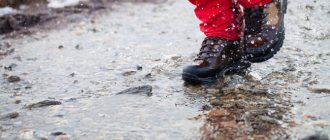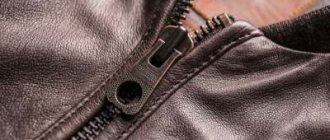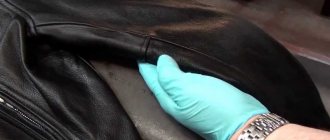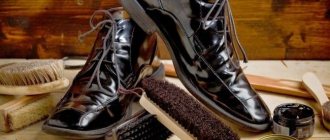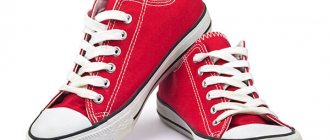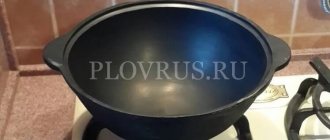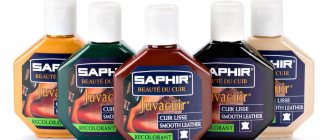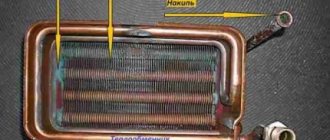When worn for a long time, shoes tend to become dirty both inside and outside. This is especially true for summer sandals. To extend the life of your favorite shoes, you need to take care of them. How to clean leather shoe insoles without ruining them will be discussed in this article. Leather is a natural material, and therefore it quickly becomes damaged when worn frequently.
When exposed to a humid environment, the material begins to stretch. Under no circumstances should you wet the skin, the product will immediately lose its shape and will not perform its previous functions. The question especially concerns summer shoes - flip-flops and slates, since the insoles of most of them cannot be removed. When cleaning, you should consider whether there are any other materials on the shoes besides leather.
How to clean leather insoles
Leather is a natural material that is characterized by mechanical stretching and sensitivity to moisture and chemicals. Therefore, you need to take special care of such shoes in order to extend their service life. How to clean insoles at home?
Leather inserts should not be exposed to wetness, that is, the option of washing them in a washing machine or by hand is not suitable. You can use special foams to care for the inside of your shoes. They are left to act for a few minutes, and then wiped with a dry or damp cloth to remove dirt and residual product.
There are also homemade recipes for cleaning insoles.
The easiest way is to use a regular toothbrush with soft bristles and a solution of laundry soap.
Lightly moisten the brush in the solution and clean the insole with light movements, repeat the procedure several times if necessary. Next, wipe the surface with a soft, dry cloth and allow it to dry further in a warm place, but not on the radiator. In this way, you can remove dirt from almost any inner surface of shoes, sandals, ballet shoes, etc.
Customer Reviews
I bought it for my daughter. I liked the ease of care. The main thing to remember is that they cannot be washed in very hot water and dried on a radiator, otherwise they will melt and the shape will change. I don’t know if the insoles can be washed, I haven’t tried them. I just wipe it with alcohol and wash it in warm soapy water about once a week.
Oksana, Irga.
They regulate the shape of the foot well. In addition, we were prescribed special shoes with rigid fixation of the ankle joint and massage. I don’t know whether orthopedic insoles can be washed. We did not wash the product, we only aired it. Six months later the situation improved. I advise you to consult a doctor promptly with such problems.
Irina, Moscow.
A very convenient thing.
I have diabetic feet and have been wearing insoles for a long time. I don't have any problems using it. They practically do not get dirty, since I wear shoes with socks or heels. Caring for orthopedic insoles is simple. I wipe it once a week with a damp, scented cloth and hang it on the balcony to dry. I bought just one pair and switch them to different types of shoes as needed. Zinaida, Syzran.
How to clean shoe insoles
It is more difficult to remove dirt from insoles when they are sewn or glued to shoes. If fabric shoes can be washed in a delicate cycle in a washing machine, then leather shoes will only require manual semi-dry cleaning.
How to clean the insoles in shoes made of leather?
To begin with, wipe everything inside with a dry cloth to remove surface dust and dirt. Then you can use one of the following products: baby cream, hydrogen peroxide, wet wipe.
1. Apply a thin layer of baby cream onto the insole using a cotton pad, leave for 3-5 minutes, then wipe everything with a rag and let it dry for several hours.
2. Hydrogen peroxide is applied with a cotton swab to particularly contaminated areas and after a few minutes is removed with a disk or cotton wool.
3. As an express remedy, you can use a damp cloth without alcohol.
After the cleaning procedure with any means, the shoes must be dried. To avoid spoiling it, do not use aggressive chemicals, bleaches, alcohol, acetone, or nail polish remover. Getting your shoes too wet can also cause them to become deformed.
We imagine where we will wear new shoes, for example, what we will wear them with, and what a nice and wonderful mood we will be in. We agree that I haven’t tried on hundreds of times at home; after buying new shoes, only a person who is too indifferent and emotionally cold.
In most cases, before wearing a new purchase, if it is not possible to wear it right away, it is tried on in front of the mirror with all sorts of outfits many times.
Over time, the pleasant feeling of novelty disappears and shoes turn into everyday routine if they are designed for everyday wear.
If the shoes have a different purpose, for example, festive, elegant, going out shoes, let’s assume that for some time they still retain the status of shoes that do not require intensive care, due to the fact that they are worn extremely rarely, on holidays.
Getting rid of the killer smell
If your sneakers or boots already smell, then even washing your feet every hour with soap and a washcloth will not help. Don’t forget about the cleanliness of insoles, especially sports shoes. Depending on the degree of neglect of the shoes, some methods may be more effective, others less.
Method 1. Basic washing
The first thing we do, if we decide on the most basic method that first comes to mind, is change the insoles. Due to mechanical loads and direct and close contact with the sweating foot, insoles are subject to the maximum possibility of bacterial damage. Simply washing and cleaning sweat from insoles with a brush is not always a good solution: the porous surface of the insoles deeply absorbs dirt, and superficial cleaning, unfortunately, does not get rid of the problem.
How and with what to clean the inside of shoes from the smell? It is not recommended to wash sports shoes in a machine or basin, but this is exactly what many do. Branded shoes do not fall apart even after several washes, and multidirectional torsion and water flows wash away dirt and germs even from the most secret places of sneakers and sneakers, while soap and mud stains do not remain on the outer surface.
For more capricious shoes, only thorough cleaning of the outside and inside with a soft damp cloth will do. You should also take into account recommendations on how to wash leather shoes so that they are cleaned inside and the fact that materials such as nubuck and suede require a special approach. Let's take a closer look at how to wash or wash the inside of shoes made from different materials and different styles:
- You cannot wash suede boots in a washing machine, because from there you will get deformed shoes; Cleaning inside should be gentle and preferably dry.
- washing winter boots inside is not so easy: as a rule, these shoes are high and fur; in the case of a removable insole, remove it and wash it separately, the rest of the shoe is opened as much as possible and cleaned with a damp cloth with washing concentrate.
- It’s not so easy to say how to wash ankle boots or similar large shoes, but we do not recommend washing them in a machine: both the ankle boots and the machine can get damaged; It is better to choose manual cleaning using an old toothbrush and washing powder or laundry concentrate.
- To wash your shoes so they don’t smell, it’s better, again, in a basin, not in a washing machine, because the shoes will get ruined: we’ll get rid of the smell, but also of the shoes.
Washing sneakers in a washing machine
Method 2. Chemical
Doesn't simple washing help with the nasty shoe smell? Then we’ll figure out how to wash the inside of the boots with chemicals so that the smell goes away. As a rule, products made from any materials must be handled carefully, so do a test - treat an inconspicuous piece of shoes and see if the color is lost or if there are any stains left. Wipe the inside of the shoes with a cotton swab soaked in:
- hydrogen peroxide,
- unsaturated solution of potassium permanganate (6 crystals per liter of water), which has the antiseptic and deodorizing effect of formidrone.
For those who are accustomed to harsh measures, and the smell of their shoes leaves no other choice, it is recommended to use the first method, that is, hydrogen peroxide. Just pour the product inside the shoe: after the drug stops bubbling, the peroxide is drained and the shoes are dried naturally (without the use of central heating radiators, electric dryers and other devices).
If the shoes are not of exceptional value, and you are not afraid of complications after the cleaning procedure, you can refresh your shoes from the smell with ammonia - just do it outside the apartment. Do your boots stink inside? A wedge is knocked out with a wedge. The use of ammonia is also possible by sealing the treated shoes in a polyethylene or cellophane bag for several hours. There is no need to wash off the ammonia; after a few hours it will disappear on its own and take the stinking odor with it.
Typically, sports shoes or sneakers emit an extremely unpleasant aroma
Method 3. Food
If you have decided, but don’t know, how to wash your shoes correctly, how to wash winter boots or wash the inside of your ankle boots to prevent a strong odor against which even the washing machine is powerless, a cotton swab soaked in vinegar and left inside the shoes for a while will help.
Green tea can be taken inside not only the human body, but also inside a shoe: having medicinal properties, it will rid the inner surface of the shoe of harmful microorganisms if you put a few wet bags there or even pour in a strong brew. Left for a while, it will destroy the painful microflora, after which the shoes are carefully dried - for example, using crumpled paper placed inside.
It should be remembered that if the shoes are made in light colors, then pouring anything inside can lead to streaks and stains appearing outside. In this case, the answer to the question - how to clean white boots and fur inside is simple - use recipes whose ingredients do not contain dyes.
For those who are able to endure any torment in order to destroy shoe stench, there is a good, but unpleasant way: old socks are soaked in alcohol or vodka, and stinking shoes are put on your feet - you should walk in this form until both socks and shoes are completely dry.
Method 4. Dry
If for some reason removing dampness is undesirable or impossible, dry methods for cleaning the inner surface of shoes are recommended: flour, talc or baby powder, sea salt, activated carbon powder (just do not use carbon for light-colored shoes) is poured inside and left for two to three hours, after which it is vacuumed. Another option for washing, cleaning or washing the inside of boots is soda, which effectively absorbs third-party odors, but its use for cleaning black shoes made of genuine leather is strictly prohibited.
Among the natural remedies, I would like to mention chamomile: filter bags purchased at any pharmacy are simply placed in shoes at night, they absorb unpleasant odors, and they cost pennies. At the same time, chamomile, which has antibacterial characteristics, eliminates and heals the microenvironment of the shoe, stops and prevents the proliferation of bacteria, which create these unpleasant odors.
For the dry method of cleaning shoes inside, use talc or powder
Method 5. Cold
The proliferation of harmful microorganisms that cause such a stench is stopped by low temperatures. The implementation of this method consists of placing each pair of problematic shoes in a separate plastic bag and placing it in the refrigerator freezer overnight; in winter, the bags are taken out to the balcony. But this method is not suitable for everyone: the upper surface of the shoe must be designed to withstand low temperatures , and this method is not at all suitable for patent leather shoes.
Before putting on a frozen pair, you should give it time to warm up to normal room temperature.
Method 6. Spraying
This is a method of eliminating odor and unfavorable microflora that is actively offered in sports shoe stores, whose specialists know exactly how to wash suede shoes or boots from odor. Special disinfectant sprays and aerosol shoe deodorants are sprayed onto the inner surface of the shoes according to the instructions; the procedure performed in the evening allows you to put on pleasant, odorless shoes in the morning.
Method 7. Anti-mud
If the shoes are dirty from the inside, the insole is glued in and it is not possible to change it, and the shoes cannot be washed in a washing machine, then there is a simple way to wash dirt from sneakers or sneakers using mechanical cleaning. To do this, you will need an old toothbrush and washing powder: the powder is poured inside and the dirt is successfully wiped off with a brush soaked in water - a comfortable, thin and maneuverable brush can easily handle even seams and joints. After this, it is important to rinse well (if the material of the shoe allows it) or wipe the inner surface so that not a trace of the powder remains.
Usually it is enough just to dry the shoes well so that the “aroma” does not appear there.
Returning to the answer to the question of whether it is possible to wash leather shoes, it must be said that this is an important process that requires a step-by-step solution:
- check the shoes for integrity and the presence of parts that may fly off during washing;
- remove the insoles and laces;
- Wipe your shoes or boots with a cloth;
- free the sole from serious dirt with a brush under running warm water;
- Wash the insoles, laces in soapy water, and wash the shoes inside and out with a cloth;
- rinse everything with warm water;
- wring out the insoles and laces;
- dry in a well-ventilated area.
When the shoes are thoroughly dry, rub them with fat (goose fat, mink) or treat them with shoe polish.
How to clean insoles in shoes
What a pair of boots can tell you
Shoes can tell something about their owner. The times when this piece of clothing served only as protection for the skin of the feet have sunk so deeply into oblivion that there are no sources left about them.
But evidence of customs adopted many thousands of years ago that have survived to this day states: both at the time of the Tower of Babel and in Ancient Egypt, shoes were a visible confirmation of a person’s status.
Luxurious sandals made of fine leather could only be worn by the nobility, while commoners were content with wooden clogs or bast shoes woven from wicker.
Currently, shoes can be used to judge both the status and character of their owner. The high cost of shoes is not the best indicator.
It is no secret that some millionaires prefer shoes from the most affordable brands, but less wealthy citizens often like to show off by dressing up in expensive shoes from well-known manufacturers. So you won’t surprise anyone with a loud brand.
Nutrition and color
Protection against drying out and premature hardening. Use creams based on natural ingredients: waxes, oils, fats. No silicone!
To add color, we recommend more often choosing creams with additional nutrition against cracking; aerosols are more suitable for express care for appearance. To achieve a natural shine, after applying the cream, polish the surface with a brush with natural bristles.
Types of creams for smooth skin
Cream jar Shoe Cream
Nourishes, refreshes color, gives natural shine. No silicone.
It has the widest color palette - 102 shades.
Contains natural beeswax.
Cream tube Leather Cream
Nourishes, refreshes color, gives natural shine. No silicone.
Easy to apply, has an applicator.
Color palette - 24 shades.
Contains natural beeswax.
Glassage cream Shoe Polish
For final polishing. No silicone.
Color palette - 6 shades.
Contains natural beeswax, carnauba wax and mineral wax.
The nuances of caring for seasonal shoes
Winter boots are quite easy to care for. The main secret is to regularly and timely clean the tops of boots from dust, dirt, melted snow and salt stains, as well as to carefully dry them. If you follow some simple rules, warm shoes can last for more than one winter.
The situation is much more complicated with shoes, sandals, sandals and ballet flats worn in the warm season. For such shoes, not only difficult-to-care materials are often used (textiles, fine leather, patent leather), but also special cut features. Numerous thin straps and ribbons require a jewelry approach when cleaning light shoes, but over time, you can develop a certain skill here too. Much more serious is the problem of dirty insoles.
Types of sandals
To find out what types of sandals exist, you need to understand that these are open shoes that are worn directly on the bare foot.
Main types:
- Tractor. A characteristic feature is the grooved sole, complemented by a thick heel.
- Bandage. They are distinguished by an elegant weave of straps in the lower leg area. Performed on a platform with heels.
- Gladiators. The height of the weave, which can be transverse and parallel, of plaits and belts sometimes reaches the knee. The sole is flat.
- Koturny. They are made on a sole that gradually thickens towards the heel, the so-called wedge heel.
- Espadrilles. A non-classical look of wedge sandals with trim, for example, from exotic raffia fiber.
- Mules. With open heel heel.
Sandals
The material for making sandals is leather - natural, artificial, textile, suede.
How to clean leather insoles
Leather is a natural material that is characterized by mechanical stretching and sensitivity to moisture and chemicals. Therefore, you need to take special care of such shoes in order to extend their service life. How to clean insoles at home?
Leather inserts should not be exposed to wetness, that is, the option of washing them in a washing machine or by hand is not suitable. You can use special foams to care for the inside of your shoes. They are left to act for a few minutes, and then wiped with a dry or damp cloth to remove dirt and residual product.
There are also homemade recipes for cleaning insoles.
The easiest way is to use a regular toothbrush with soft bristles and a solution of laundry soap.
Lightly moisten the brush in the solution and clean the insole with light movements, repeat the procedure several times if necessary. Next, wipe the surface with a soft, dry cloth and allow it to dry further in a warm place, but not on the radiator. In this way, you can remove dirt from almost any inner surface of shoes, sandals, ballet shoes, etc.
Removing stains
The external decor of sandals may be damaged by marks from various substances.
If you notice stains on the leather surface after rain, you should dissolve wine vinegar in equal parts in water. Soak a cotton pad and wipe off all marks.
Grass stains from suede products are removed with a soft sponge and a small amount of dish gel. Residues are removed with a damp cloth.
Drops of oily substances are sprinkled with talcum powder and left for five hours. Then clean with a brush.
To remove old dirt from light-colored sandals, take half a glass of milk, to which add 1 tsp soda. and ammonia - 2 drops. Spread over the marks and wipe with a soft cloth.
How to remove stains on sandals
